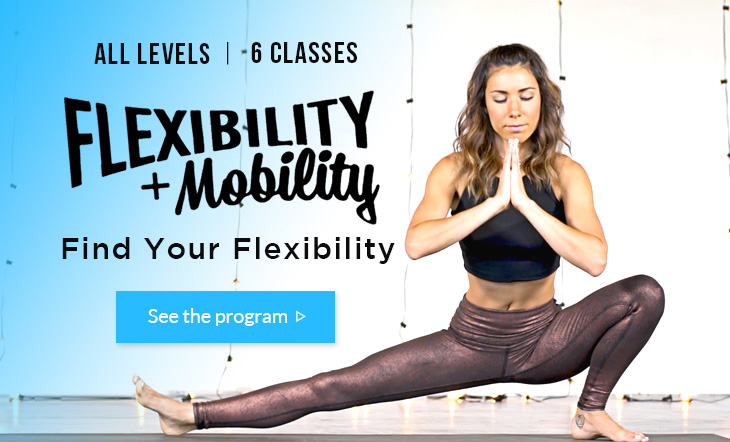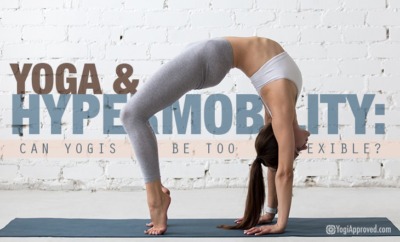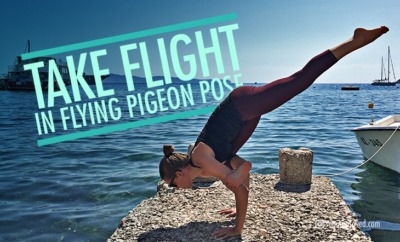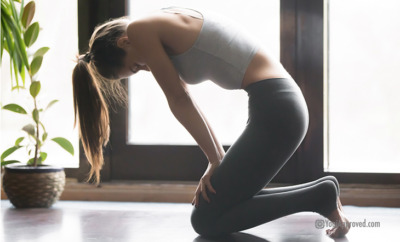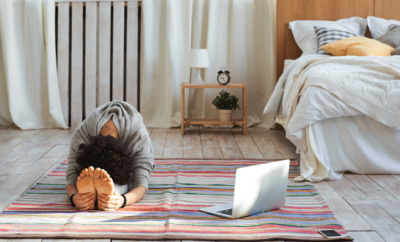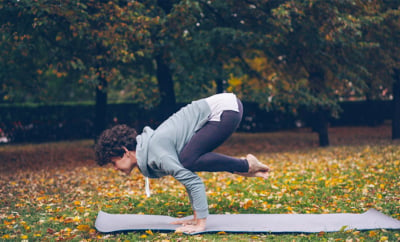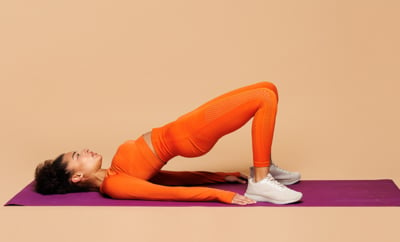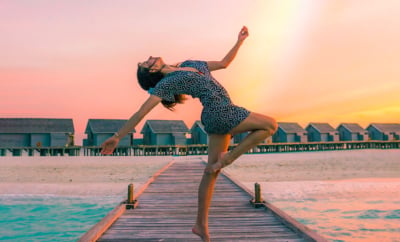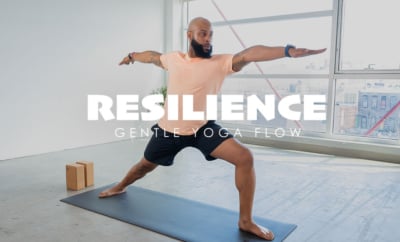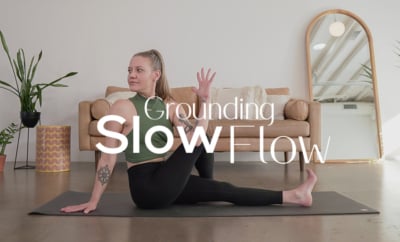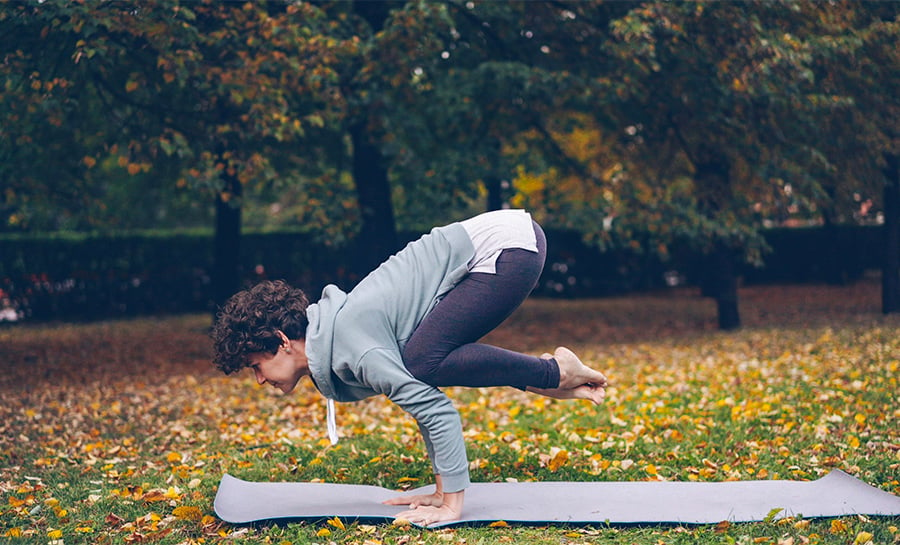Do You Have to Be Flexible to Practice Yoga?

flexible to practice yoga
Flexibility and yoga seem to be interchangeable terms. Yet, the key to a successful yoga practice lies in balance. As a yoga teacher, I have a lot of conversations with people about yoga, and I’m amazed at how many of those conversations end with, “I’m just not flexible enough to do yoga.”
I used to think that, too. When I applied for yoga teacher training, one of my worries was what if I’m not flexible enough? I have short hamstrings, which prevents me from touching my toes with straight legs. I’ve been that way my whole life, and while it’s gotten significantly better, my forward fold looks nothing like the photos of yogis on Instagram.
Modern yoga has become synonymous with flexibility, stretching, and even contortionism. These yoga stereotypes are perpetuated on social media, with the “perfect” posture seen as the one with the deepest backbend or the widest stretch.
The next time you’re on your mat, think about how you can do a pose differently, rather than your lack of physical flexibility.
But those Instagram photos are just the tip of the iceberg of what yoga is and what it can do. I no longer worry about being “flexible enough” – who cares if I can touch my toes?! Yoga isn’t about flexibility, that’s just a by-product. And flexibility matters less than you think.
So let’s clear this up right now – do you have to be flexible to practice yoga?
What Happens When You Stretch?
Muscles are designed in layered spindles (think hands loosely clasped together, palms apart). When you stretch a muscle, the overlap of your muscle fibers decreases, giving you a greater range of motion and an increased amount of potential energy (think fingers drawing away from each other).
Stretching uses this energy to increases the power of your muscle on the rebound. It also releases endorphins, which is why it feels so good.
The structure of your body may limit your flexibility based on:
- Bones: you can’t stretch those
- Joints: they provide some flexibility by acting as levers to move your bones
- Ligaments and tendons: you really don’t want to stretch these as they connect bone to bone, or bone to muscle, and aren’t very elastic
- Muscles: you want to stretch these!
When you reach the end range or the maximum resting position of a muscle, stretching deeper is not always better. It can put elevated stress on parts of the body that aren’t designed to stretch and can lead to injury.
How Flexibility Factors Into Your Yoga Practice
Yoga is all about balance. In the Yoga Sutras (http://amzn.to/2qO3onG), Patanjali encourages a balance of steadiness (Sthira) and ease (Sukham). When you think about how much strength or how much flexibility you want in your yoga practice, consider the balance between steadiness and ease.
If you strain yourself and suffer while trying to reach your toes – then you are not at ease. If you sink into your joints in a lunge and stress your body – then you are not steady. In every posture, ask yourself how you can embody those principles. Relax the areas that don’t need to be tense, but find strength in the places where you need to support and protect your body.
Read more about the Yoga Sutras in 20 Yoga Sutras Translated and Explained.
The Answer to the Flexibility Question
As we learned in the previous section about strength and flexibility, they truly go hand in hand for a strong and balanced yoga practice (and physical body in general). The stronger you are, the more flexible you need to be, and vice versa. Yet the best part of all about yoga is that it truly is for every body. You can start where you are, and progress in your journey from that starting point.
To summarize, you do not need to be flexible to practice yoga. Just like strength, flexibility comes with time and practice. Read on for more insight on how to apply this knowledge.
Add Strength to Your Yoga Practice
Many people, whether in school or at work, sit at desks all day and do not engage their muscles. Building strength in yoga – and not just flexibility – is important for staying safe and healthy.
To build strength, do the opposite of what you do in a stretch. Rather than elongate those muscle fibers, contract them and draw them closer together. The flexed muscle pulls the ends where they’re connected closer together, creating a force across the joints. When you build strength, you protect your bones, joints, ligaments, and tendons. You also gain flexibility.
Practice Flexibility of the Mind
In yoga, change happens on more than just a physical level. Flexibility isn’t just about how far you can stretch your body; it’s also about the flexibility of your mind and your ability to choose how you react to the world around you. The next time you’re on your mat, think about how you can do a pose differently, rather than your lack of physical flexibility.
The Takeaway: Beyond Flexibility
If flexibility is not the end goal of yoga, then you may ask, “what am I doing on the mat?!” Yoga is a way to practice how you want to be when you step off the mat – and into your life. What qualities do you want to embody? Do you want to be stronger? More balanced? Compassionate?
Instead of stretching more to reach yoga pose “perfection,” try to bring the characteristic of flexibility into your practice. Forget about the end shape and practice who you want to be. Desikachar once said, “The goal of yoga is to encourage us to be a little better than we were before.” Start where you are and practice being who you want to be.
Want to Get Flexible?
Try our 6-class yoga for flexibility and mobility program with Kelly Pender. See the classes here


This Month's Letter
From the Editor
Monthly motivation and food for
thought from our founder.


